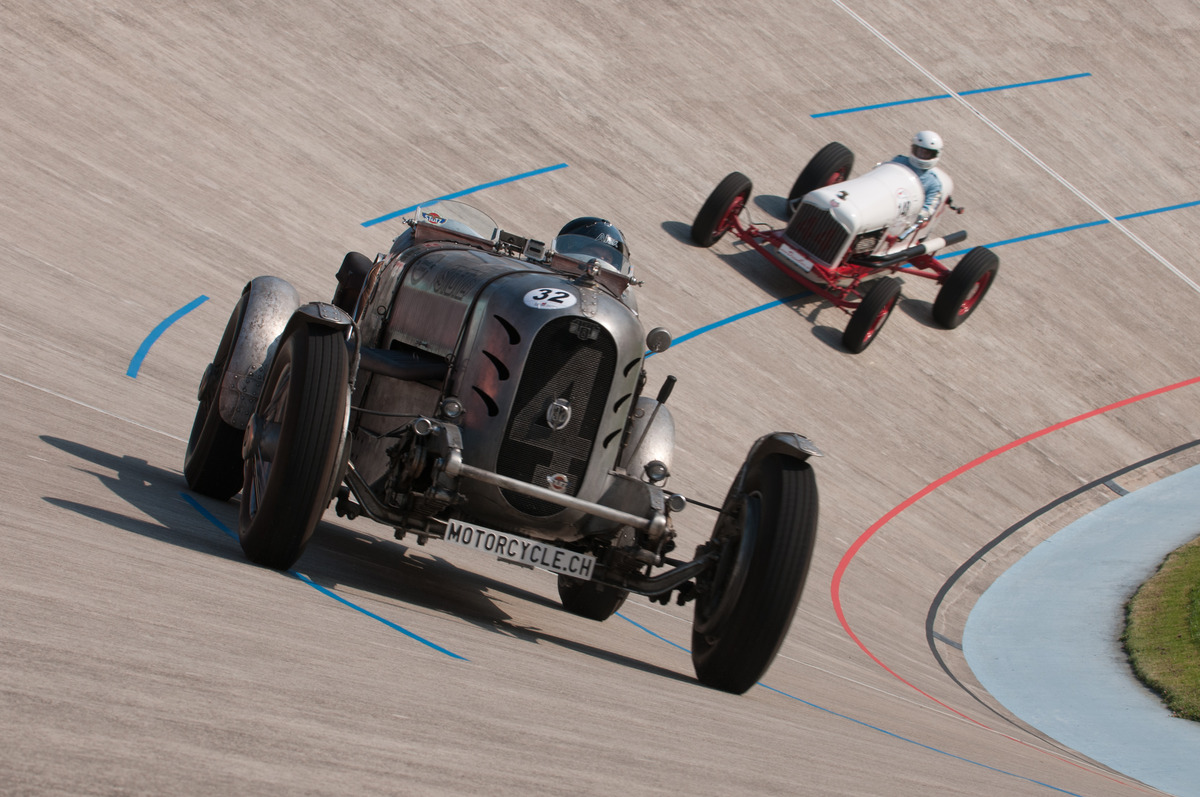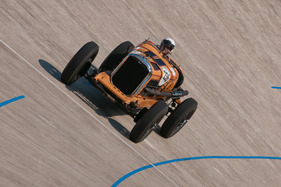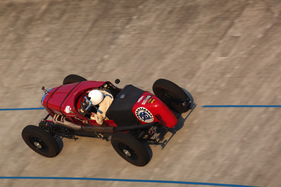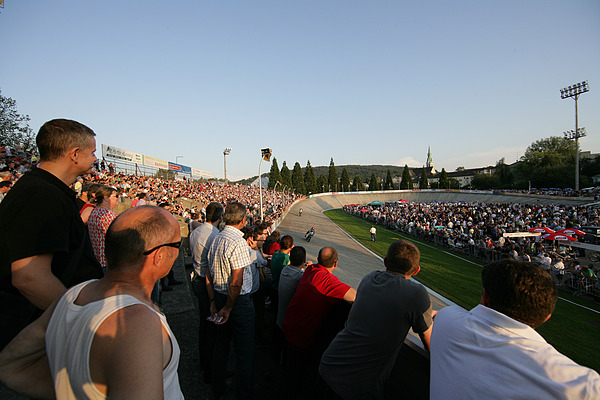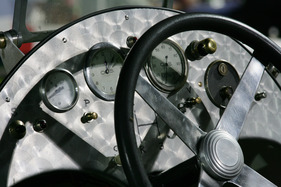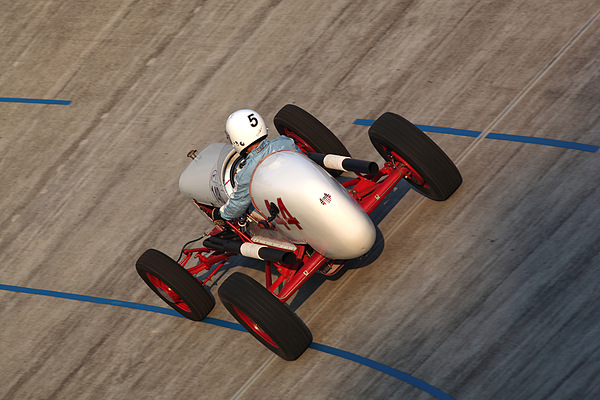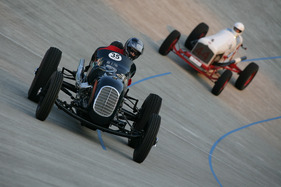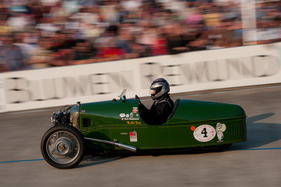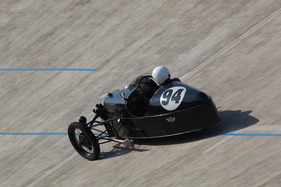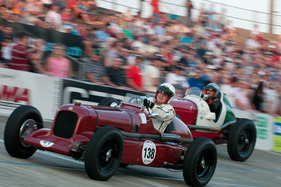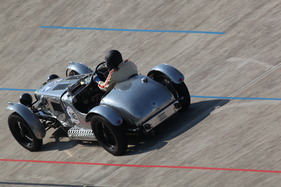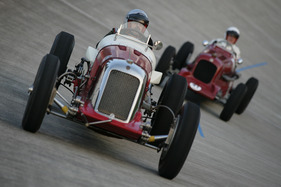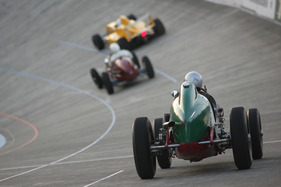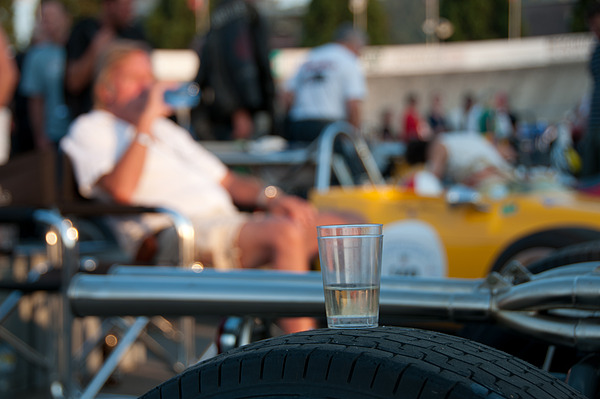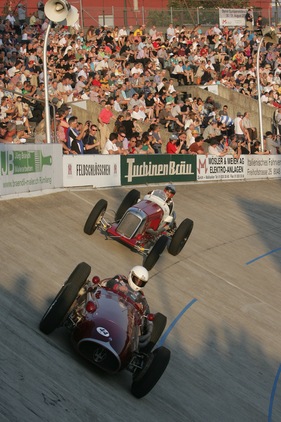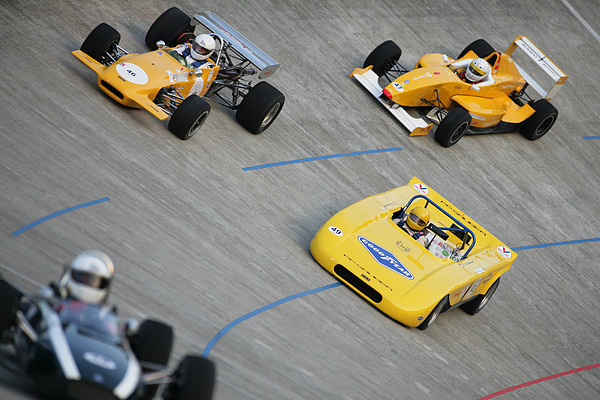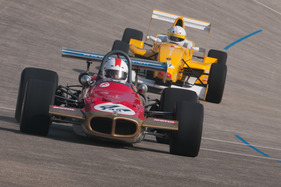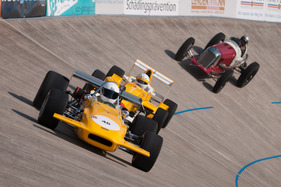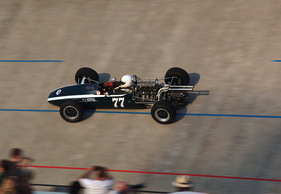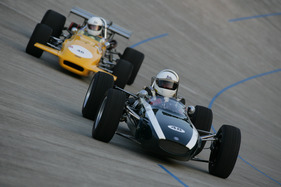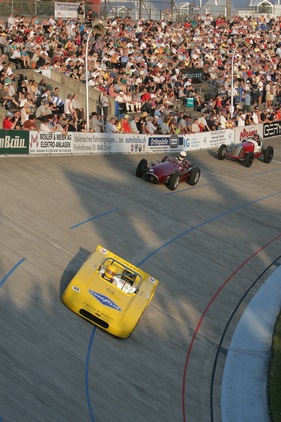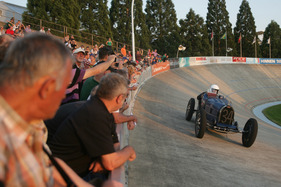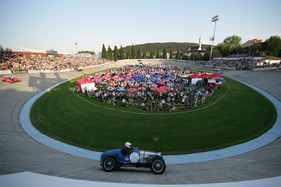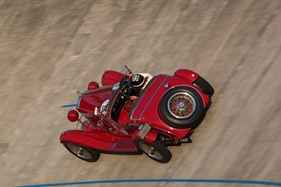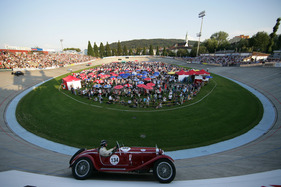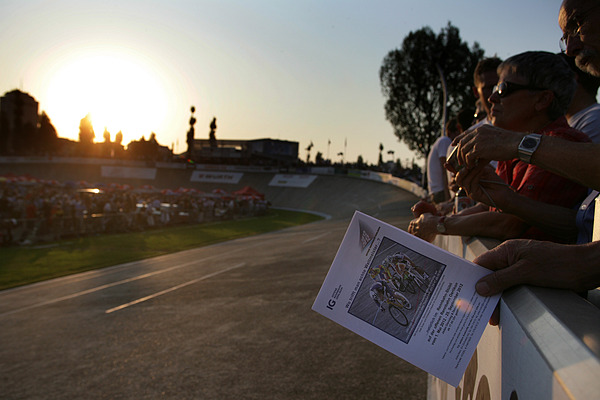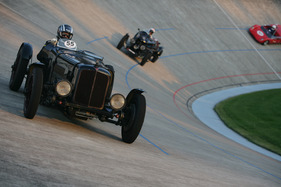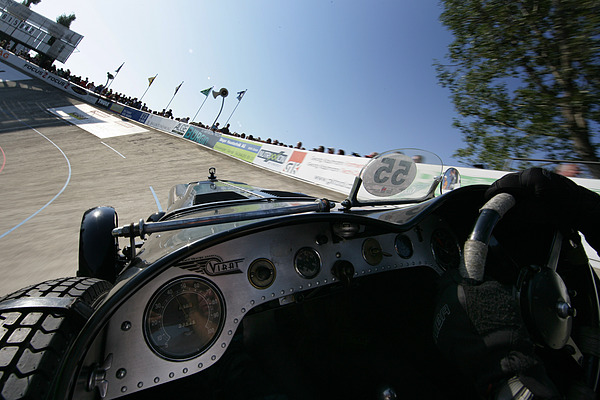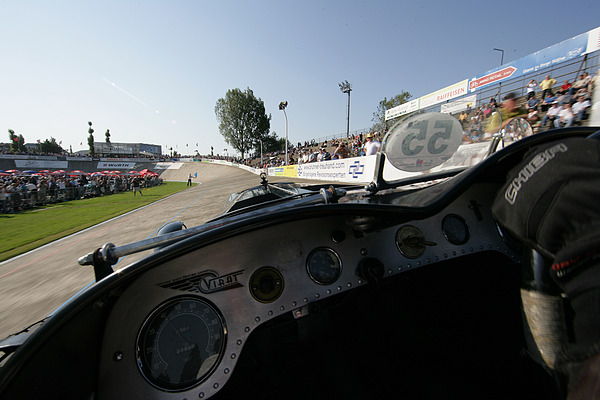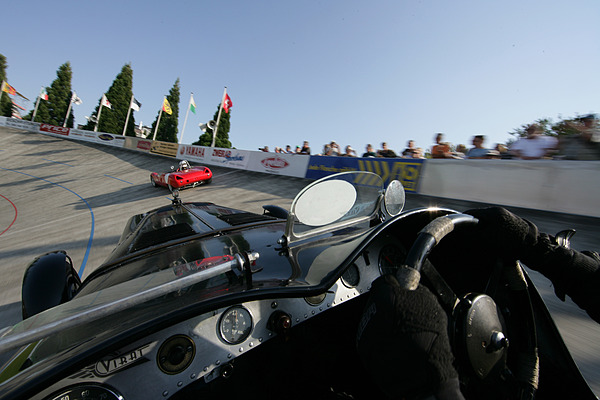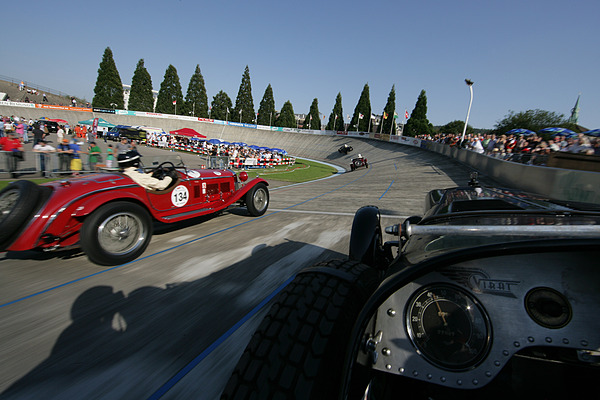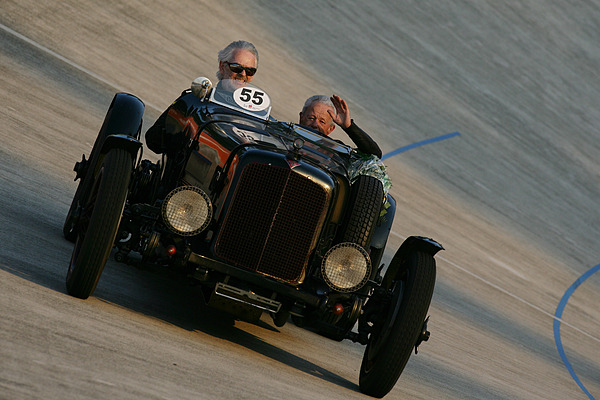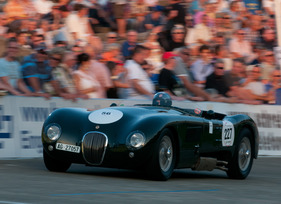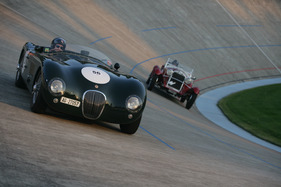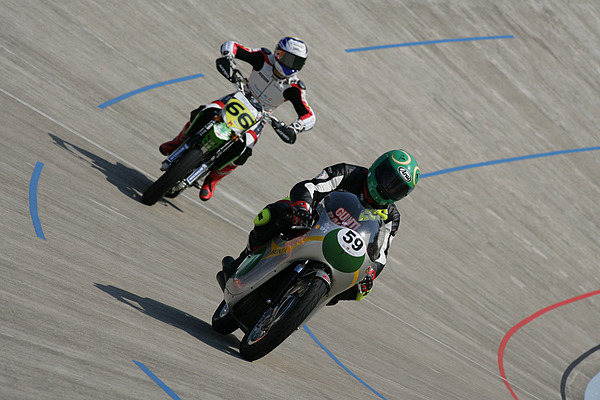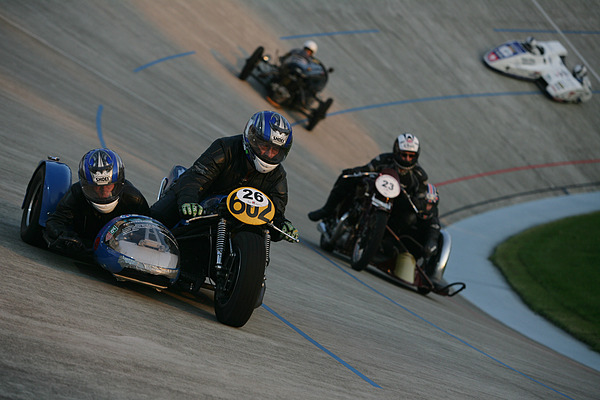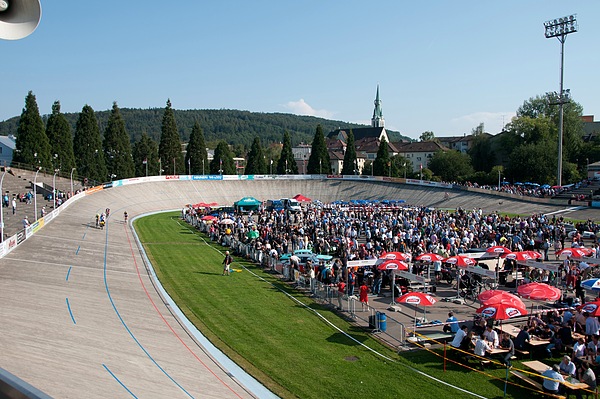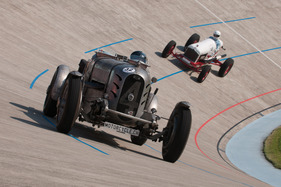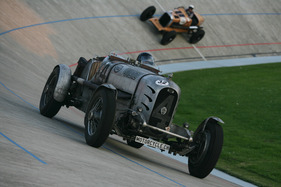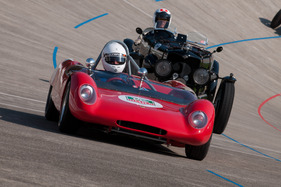When large-volume engines roar in Oerlikon and an intense up and down hum and roar can be heard, then "Indianapolis in Oerlikon" is the order of the day at the open racetrack near Zurich. Normally, racing bike events are held at this venue, but once a year, selected racing cars are invited to take part in demonstration rides between bike races, which are met with great public interest.
In 2012, an estimated 6,000 spectators watched various vehicle classes, from motorcycles and sidecars to monoposto formula racing cars and two-seater sports cars. Indianapolis vehicles were announced as a special treat.
Oerlikon and Indianapolis in comparison
The comparison between the Oerlikon racetrack and the legendary Indianapolis oval is interesting: while Oerlikon's two 180-degree banked turns with an incline of 44.5 degrees and a track length of 333.3 meters are primarily geared towards racing bikes with a speed of around 60 km/h, the Indianapolis Speedway's approximately 4,000-meter-long oval with four banked turns inclined at just over nine degrees, each of which is around 122 meters long, allows speeds of well over 350 km/h.
While a few thousand spectators can watch the racing action in Oerlikon, the Indianapolis race track can accommodate around 300,000 spectators, truly gigantic dimensions. In Indianapolis, the surface consisted of bricks until 1935, which were gradually covered with asphalt. The open - and therefore weather-exposed - Oerlikon racetrack, which celebrates its centenary in 2012, is made of concrete: the prestressed concrete structure built in 1912 was the first of its kind in the world!
Racing cars you can touch
The small dimensions of Oerlikon's open racetrack create great intimacy. The racing cars race past almost at a meter's distance from the spectators at the top of the track, and the sound and smell of the historic vehicles can be enjoyed directly. Inside the oval, the vehicles are available for exploration during the breaks and the drivers/owners are happy to provide information. Nowhere else can historic racing be enjoyed so directly and in such an entertaining way.
Indycars on the racetrack
As a special feature for the tenth edition of "Indianapolis", the organizers around Georg Kaufmann have brought together a field of Indy cars. Although only a minority of the cars have probably ever actually raced on the famous oval, the American racing cars certainly brought a lot of "American spirit" to Oerlikon. In any case, the audience was thrilled by the unusual racing cars such as the Buick Indianapolis Indy Race from 1930, Nash 480 Aeropower from 1930, Stutz DV 32 Racer from 1930, Buick "Bulldog" from 1933, Ford Ermer Special V8 from 1935 and Miller Sprintcar from 1937.
The Ford Ermer Special V8 from 1935
Sprint car races were and still are very popular in the USA. While in the beginning they usually started on horse racing tracks, gravel and asphalt races were added later. Americans with a passion for racing built their own specials that were particularly suitable for these competitions.
One example of this is the Ford Ermer Special V8 from 1935, which was active in various series until 1955 and scored many a victory. Built on a 26-series Essex chassis and equipped with a Ford Truck front axle and a Halibrand Quick-Change rear axle, which allowed the gear ratio to be changed in minutes, the Ford Special relied on the power of the flathead V8. Thanks to the Fenton aluminum cylinder head and a compression ratio of 8.7:1, the veteran develops around 150 hp from 4,080 cm3. Together with the 745 kg weight of the compact racing car, the powerful engine ensures capable driving performance. The brakes are applied with a hand lever (not a foot brake), which acts on all four wheels via hydraulics. The competitive racing car remained in the Ermer family until recently and was restored by the builder's son around 12 years ago and then used in historic racing.
Maserati, Bugatti, Alfa Romeo, Jaguar, ....
The field of vehicles offered the opportunity to see many a legendary racing car again. Grand Prix series winners such as the Bugatti T35B or Maserati 8CM and 250F completed their laps, as did Morgan three-wheelers, an Alfa Romeo 6C, an Amilcar or a Lotus 23. Whether single or two-seater, the cars were on the move, much to the delight of the spectators. Driving on the narrow oval is not without its pitfalls! In the bends, the vehicle is pressed to the ground and follows its course almost stubbornly, but at the exit of the bend the track flattens out and the usual centrifugal forces begin to take effect. So you have to be careful and not come out of the bend too quickly.
The long wait for the bratwurst
Those who wanted to treat themselves to a snack between the demonstration runs were suddenly forced to slow down. The queues stretched almost as far as half of the infield and some people probably waited 30 minutes to get their bratwurst. But they didn't have to miss anything, because in the meantime the racing drivers continued to circle around them, filling the whole area with the wonderful sounds of historic racing.
Registered vehicles (racing cars only)
| No | Vehicle (make/type) | Year | Category | Comments |
|---|---|---|---|---|
| 21 | Morgan Three Wheeler | 1930 | Sidecar | 1,300 cm3, 100 hp, participation in many mountain and circuit races at home and abroad. |
| 22 | Morgan Three Wheeler Aero Super Sports | 1929 | Sidecar | 1,100 cm3, 50 hp, participation in many events |
| 30 | Buick Indianapolis Indi Racer | 1930 | Racing-Indy | 3'800 cm3, 140 hp, various events in USA + South America. 3 x Klausenrennen Memorial, 2 x GP Bern. Countless hill climbs in Europe. |
| 31 | Nash 480 Aeropower | 1930 | Racing-Indy | 4,600 cm3, 120 hp, vehicle was exported to Argentina in 1930. Acquired by the current driver in 2005. |
| 32 | Stutz DV32 Racer | 1930 | Racing-Indy | 5,277 cm3, Twin Cam, 155 hp, built in Indianapolis for Argentinian boxer Luis Angel Firpo. |
| 33 | Buick "Bulldog" | 1933 | Racing-Indy | 4,300 cm3, 125 hp, imported from the USA |
| 34 | Ford Ermer Special V8 "Big Car" | 1935 | Racing-Indy | 4'080 cm3, 150 hp, specialist for American vehicles, on the road since 2004 with various US racing cars on hill climbs and circuits. Authentically restored vehicle. |
| 35 | Miller Sprintcar | 1937 | Racing-Indy | 3,300 cm3, 90 hp, vehicle was built in 1937 for a private owner and used as a sprint car. |
| 40 | Amilcar CG Supercharger | 1927 | Racing monoposto | 1,110 cm3, over 100 hp, various races with historic vehicles at home and abroad. |
| 41 | MG K1 Monoposto | 1931 | Racing monoposto | 1,275 cm3, approx. 120 hp, monoposto |
| 42 | Alvis Grenfell | 1932 | Racing monoposto | 2,511 cm3, 140 hp, participation in numerous races in the UK and many other events at home and abroad, 2nd Oldtimer GP Nürburgring 2007. |
| 43 | Maserati 8 CM | 1933 | Racing monoposto | 2,992 cm3, approx. 250 hp, in CH racing team (Ecurie Braillard) until 1935. Sold to Hungary in 1937. In active racing use until 1961. A book about this vehicle will be published at the end of September 2012. |
| 44 | Maserati 250 F | 1956 | Racing monoposto | 2,493 cm3, 270 hp, participation in many mountain and circuit races at home and abroad. |
| 45 | Lotus 59 Formula 2 | 1969 | Racing monoposto | 1,600 cm3, 260 hp, 1998 + 2004 European Champion of the Euro F2 Trophy. Jochen Rindt and Graham Hill drove a Lotus like this in 1969. |
| 46 | March 703 | 1970 | Racing monoposto | 1,600 cm3, approx. 200 hp, vehicle in Switzerland since 1970. |
| 47 | Formula Renault | 2003 | Racing monoposto | 2,000 cm3, 198 hp, vehicle from the up-and-coming Renault formula (worldwide). |
| 48 | Cooper F1 | 1965 | Racing monoposto | 1,500 cm3, 8 cylinders, 190 hp, 1965 works car for Jochen Rindt. |
| 49 | Sauber C1 | 1970 | Racing monoposto | 1,000 cm3, 130 hp, one of the first two Sauber cars built. CH sports car champion 1974 with Fritz Hürzeler. Owned by the current driver since 1989. |
| 50 | Alfa Romeo 6C 1500 Sport | 1928 | Racing monoposto | 1,750 cm3, approx. 75 hp, first registered in 1932, Barker bodywork. Active racing participation at home and abroad (not present) |
| 51 | Bugatti T35B | 1929 | Racing | 2,300 cm3, approx. 130 hp, vehicle in active racing use in France until 1933. Restored in the 1960s. In Switzerland since 2001. |
| 52 | Riley Nine Monaco Special | 1928 | Racing | 1,084 cm3, 46 hp, vehicle was converted at the beginning of the 1970s and used in the UK |
| 53 | Alfa Romeo 6C 1750 Grand Sport | 1931 | Racing | 1,750 cm3, approx. 90 hp, 3 x Klausen races |
| 54 | Riley Speed Adelphi | 1936 | Racing | 1'762 cm3, 140 hp, entries in hist. Rally's and hill climbs nationally and internationally. |
| 55 | Alvis Speed 25 | 1936 | Racing | 3,600 cm3, 150 hp, bodywork rebuilt in 2006, chassis ex Liverpool Police vehicle |
| 56 | Jaguar C-Type | 1963 | Racing | 3'400 cm3, 200 hp |
| 57 | Lotus 23-S-126 Prototype Bi-Place | 1963 | Racing | 1,600 cm3, approx. 200 hp, vehicle is in original condition and was driven by various well-known racing drivers |
| 58 | Swallow Doretti Shapecraft | 1954 | Racing | 2,000 cm3, 120 hp, vehicle is a one-off. Converted to semi-streamlined bodywork at Shapecraft in the UK in 1962. |
